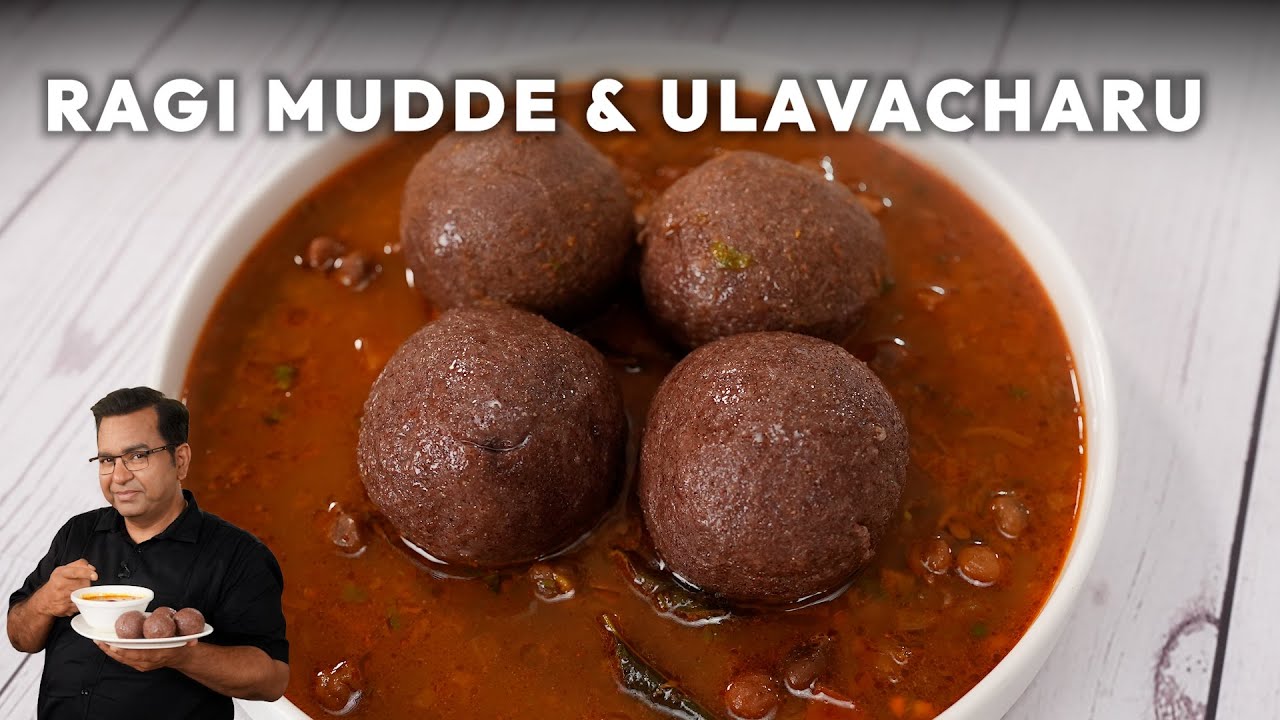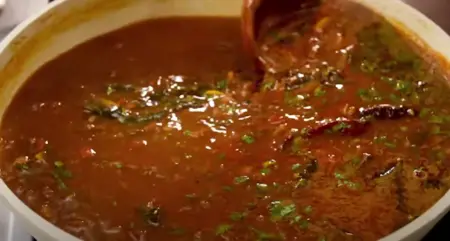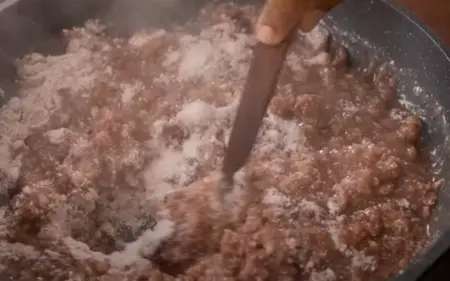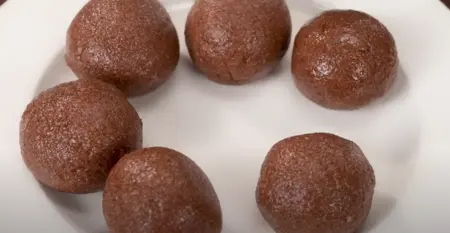
Ragi mudde & Ulavacharu

50mins

6

05mins
Introduction
Ragi Mudde and Ulavacharu take me back to my childhood in Karnataka, where every family gathering was incomplete without this comforting duo. I vividly remember my grandmother preparing Ragi Mudde with such skill and love, the aroma filling the entire house. The earthy smell of ragi and the tangy, spicy Ulavacharu would make our mouths water as we eagerly awaited the meal. This simple yet satisfying dish always brings a smile to my face and reminds me of those cherished family moments.
Discovering Ragi Mudde and Ulavacharu was like unearthing a hidden gem in Indian cuisine. The first time I tasted this combination, I was struck by how something so unassuming could be so rich in flavor and nourishment. It’s a testament to how traditional recipes often carry a wealth of taste and health benefits that are deeply rooted in our culinary heritage.
Ingredients:
For Ulavacharu:
- Kulit (Horse gram), soaked: 1 cup
- Brown chana, soaked: 1 cup
- Water: As required
- Salt: 1 tsp
- Oil: 2 tbsp
- Jeera (Cumin seeds): 1 tsp
- Dry red chili: 2 pcs
- Curry leaves: 12-15 pcs
- Onion, chopped: 1 pc
- Green chili, slit: 2 pcs
- Ginger & garlic paste: 1 tbsp
- Turmeric powder: ½ tsp
- Chana & Kulit stock: As required
- Garlic, crushed: 4-5 pcs
- Tamarind pulp: 2 tbsp
- Tomato, chopped: 1 pc
- Red chili powder: 1 tsp
- Pounded masala (Black pepper, coriander seeds, jeera): ½ tbsp
- Boiled kulit & brown chana: As required
- Salt: ½ tsp
- Coriander, chopped: 1 tbsp
For Pounded Masala:
- Black pepper: 1 tsp
- Coriander seeds: 1 tsp
- Jeera (Cumin seeds): 1 tsp
For Ragi Mudde:
- Ragi flour: 3 cups
- Water: ½ cup for slurry
- Water: 5½ cups for cooking
- Salt: 1 tsp
- Ghee: 1 tbsp
Instructions:
Step 1: Soak and Boil Horse Gram and Brown Chana
- Soak: Soak horse gram (kulit) and brown chana in water for 6-8 hours or overnight.
- Boil: Rinse and transfer them to a pressure cooker. Add enough water to cover the legumes and a pinch of salt. Pressure cook for 4-5 whistles or until soft. Strain the stock and set it aside for later use.
Step 2: Pound the Masala (Without Roasting)
- Pound: In a mortar and pestle or spice grinder, pound black pepper, coriander seeds, and cumin seeds into a coarse mixture. This unroasted masala will provide a raw, earthy flavor to the curry.
Step 3: Begin Tempering
- Heat Oil: Heat oil in a pan over medium heat. Add cumin seeds (jeera) and let them splutter.
- Add Spices: Add dry red chilies and curry leaves. Stir briefly until the curry leaves become fragrant and the red chilies darken slightly.
Step 4: Cook the Onions and Aromatics
- Cook Onions: Add chopped onions to the pan and cook until golden brown, stirring occasionally.
- Add Aromatics: Incorporate slit green chilies, ginger-garlic paste, and turmeric powder. Sauté until the raw smell of ginger and garlic fades.
Step 5: Add Stock and Seasonings
- Pour Stock: Add the reserved stock from the boiled horse gram and chana into the pan. This will enrich the curry’s flavor.
- Mix Ingredients: Add crushed garlic cloves and tamarind pulp. Stir well and let simmer for a few minutes to meld the flavors.
Step 6: Add Tomatoes, Spices, and Boiled Legumes
- Add Tomatoes: Stir in chopped tomatoes, red chili powder, and the pounded masala.
- Cook: Cook until the tomatoes soften and blend with the curry, forming a thick gravy.
- Incorporate Legumes: Add the boiled horse gram and brown chana. Stir well, adjust salt, and let the curry simmer until it thickens. Garnish with chopped coriander before serving.

For Ragi Mudde:
Step 1: Prepare Ragi Slurry
- Mix Slurry: In a bowl, mix a small amount of ragi flour with a little water to form a smooth slurry. This will help prevent lumps when added to boiling water.
Step 2: Boil Water
- Heat Water: In a large pot, bring 5½ cups of water to a boil. Add 1 tsp salt to the water.
Step 3: Add Ragi Slurry
- Pour Slurry: Slowly pour the ragi slurry into the boiling water while stirring continuously to keep the mixture smooth.
Step 4: Add Ragi Flour
- Incorporate Flour: Gradually add the remaining ragi flour to the boiling water. Continue stirring to prevent lumps and ensure a smooth mixture.
Step 5: Cook the Mixture
- Cook: Reduce heat to low and keep stirring until the mixture thickens and starts pulling away from the sides of the pan. Cook until it forms a smooth, dough-like consistency.

Step 6: Add Ghee and Shape
- Add Ghee: Stir in 1 tbsp ghee and mix thoroughly.
- Shape: Allow the mixture to cool slightly. Shape into balls (mudde) with damp hands. Serve hot with Ulavacharu or curry of choice.

About the Recipe
Ragi Mudde, made from finger millet, is a staple in many households, especially in South India. This dish is not just filling but also packed with nutrients. The soft, round balls of ragi are paired with Ulavacharu, a hearty lentil-based stew that brings a rich, spicy kick. Together, they offer a perfect balance of flavors and textures. Ragi Mudde is a wonderful source of calcium and iron, while Ulavacharu provides protein and essential vitamins. This recipe reflects the simplicity and depth of traditional South Indian cuisine, making it a wholesome choice for any meal.
Cooking Tips
- Proper Cooking of Ragi: Ensure the ragi flour is well-cooked and smooth to avoid lumps in the mudde. Stir constantly while adding water to achieve the desired consistency.
- Consistent Mixing: When preparing Ragi Mudde, mix it vigorously to ensure that the mixture is well-blended and smooth.
- Ulavacharu Consistency: Adjust the consistency of Ulavacharu by adding more water if needed, depending on whether you prefer a thicker or thinner stew.
- Spices Balance: Adjust the spices in Ulavacharu according to your taste. Be cautious with the tamarind as it can become overpowering.
- Serving Hot: Both Ragi Mudde and Ulavacharu are best enjoyed hot. Serve immediately after cooking for the best flavor and texture.
Pairing Guide
Ragi Mudde and Ulavacharu pair wonderfully with a variety of accompaniments. For a refreshing contrast, consider serving a simple cucumber salad or a side of yogurt. A light, spicy chutney can also complement the rich flavors of Ulavacharu. For beverages, opt for a cool buttermilk or a traditional South Indian filter coffee to balance the hearty meal. This combination creates a well-rounded dining experience that highlights the traditional flavors of South India.
Frequently Asked Questions
-
What is Ragi Mudde? Ragi Mudde is a traditional South Indian dish made from finger millet flour and water. It is shaped into soft, round balls and is known for its nutritional benefits and mild flavor.
-
How do I make Ragi Mudde? To make Ragi Mudde, cook ragi flour with water until it forms a smooth, dough-like consistency. Shape into balls and serve with a side of Ulavacharu.
-
What is Ulavacharu? Ulavacharu is a spicy lentil-based stew from Andhra Pradesh. It is made with urad dal, tamarind, and a blend of spices, offering a tangy and spicy flavor.
-
Can I prepare Ragi Mudde in advance? Ragi Mudde is best served fresh. However, you can prepare the mixture in advance and shape it into balls just before serving to maintain its texture.
-
How do I store leftover Ulavacharu? Store leftover Ulavacharu in an airtight container in the refrigerator for up to 3 days. Reheat thoroughly before serving.
-
Is Ragi Mudde suitable for people with diabetes? Yes, Ragi Mudde is a good choice for people with diabetes due to its low glycemic index and high fiber content, which helps in controlling blood sugar levels.
-
Can I freeze Ragi Mudde? Freezing Ragi Mudde is not recommended as it may alter its texture. It is best enjoyed fresh.
-
What can I use as a substitute for Ulavacharu if I can’t find urad dal? If urad dal is unavailable, you can use split yellow lentils as a substitute, though it will alter the flavor slightly.
-
How spicy is Ulavacharu? The spice level of Ulavacharu can be adjusted according to your preference. It can range from mild to very spicy depending on the amount of chili and other spices used.
-
Can Ragi Mudde be made with other flours? While traditional Ragi Mudde is made with ragi flour, you can experiment with other whole grain flours, but the texture and flavor will differ from the original recipe.
